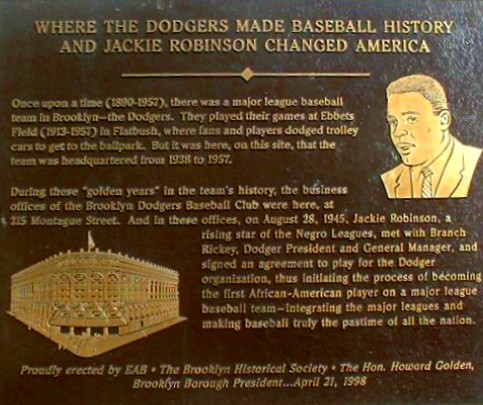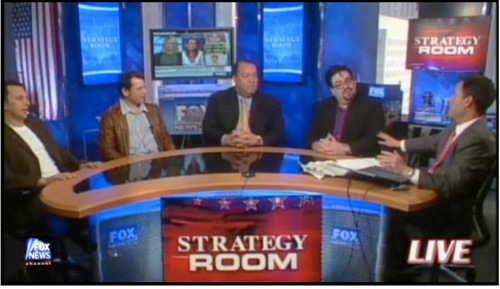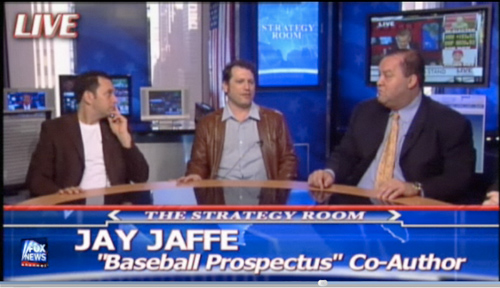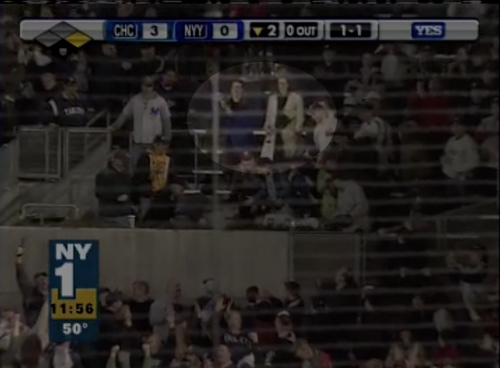A senseless tragedy, the passing of a legend, and a bittersweet reminder of a Bird that flew too high — it’s been a miserable week for baseball mortality. I was barely 15 minutes into my chat on Baseball Prospectus on Monday afternoon when a chorus of readers posted to inform me of the passing of Harry Kalas, the longtime Phillies announcer, winner of the Ford C. Frick Award (for the broadcasters wing of the Hall of Fame), voice of NFL Films, and one of the great voices in the history of sports, period. You didn’t even have to know who he was to recognize that gravelly, booming, authoritative voice. It is the voice of history chiseling words in stone for all eternity. Words like, “Outta here!” for his signature home run call, or “Swing and a long drive, there it is, number 500! The career 500th home run for Michael Jack Schmidt!” for his most famous one.
As NFL Films president Steve Sabol, who worked closely with Kalas since 1975, wrote, “In many ways, Harry is the narrator of our memories. His voice lives on not only on film, but inside the heads of everyone who has watched and listened to NFL Films.” In a video clip, Sabol further elaborated on Kalas’ style: “There was no shtik with Harry. It was just a blend of crisp articulation, resonance and vocal dexterity. He could read the ingredients on a shampoo bottle and and make it dramatic or funny or poignant.”
Kalas’ last major hurrah, of course, was calling the final out of the Phillies’ World Series victory last October:
One strike away; nothing-and-two, the count to Hinske. Fans on the their feet; rally towels are being waved. Brad Lidge stretches. The 0-2 pitch — swing and a miss, struck him out! The Philadelphia Phillies are 2008 World Champions of baseball! Brad Lidge does it again, and stays perfect for the 2008 season! 48-for-48 in save opportunities, and watch the city celebrate! Don’t let the 48-hour wait diminish the euphoria of this moment, and the celebration. And it has been 28 years since the Phillies have enjoyed a World Championship; 25 years in this city with a team that has enjoyed a World Championship, and the fans are ready to celebrate. What a night!
Kalas was actually deprived of a similar opportunity to call the Phils’ 1980 World Series clincher, as the network agreements in place at the time prevented local broadcasters from calling the games. He did record a narration of that final out after the fact, and thanks in part to his popularity, the rule was amended the following year. Not even stuffy old Major League Baseball could resist that voice.
Several years ago, I was flipping through ESPN Classic and I came across an NFL Films-produced documentary called “Bush Leagues to Bright Lights,” devoted to pitcher Erskine Thomason, who pitched one inning for the 1974 Phillies. Narrated by Kalas, it followed the 25-year-old righty from spring training through his late season callup, but the footage of his lone appearance had to be staged, because the film crew showed up late and swapped in stock footage from a game filmed the next day. Still, Kalas’ voice made it worth catching.
MLB.com has a handful of clips of Kalas, including his call of the final out of the 2008 World Series. ESPN has a clip of Schmidt talking about what Kalas’ call of that famous homer meant to him. NFL Films has a brief tribute, and Baseball Prospectus Radio has a 2003 interview he did with Will Carroll.
• • •
Last week saw 22-year-old Angels pitcher Nick Adenhart die in a car crash just hours after he’d thrown six shutout innings against the A’s, his first success at the major league level. Though I never actually saw Adenhart pitch — he made just four big-league appearances — I followed his progress closely over the last couple of years, reading about him numerous times in BP colleague Kevin Goldstein’s columns and writing about him for the Fantasy Baseball Index and in particular, the Index’s weekly spring updates. Adenhart had come into the 2008 season as the Angels’ top prospect, but an ugly 9-13, 5.76 ERA season at Salt Lake City (my hometown, and a rough place for any pitcher who’s trying to get his stuff together) caused his stock to dip. Thanks to the combination of a strong spring and injuries to John Lackey and Ervin Santana, Adenhart broke camp in the rotation, and he gave every indication he was ready to fulfill his promise. For death to come calling as it did — particularly via a hit-and-run DUI which killed two of his fellow passengers — was a cruel, heartbreaking blow.
ESPN’s Jerry Crasnick chronicles Adenhart’s journey to the majors. BP has a poignant guest post by Shane Demmitt, an Angels’ employee with a special bond to the fallen pitcher. The Rev of Halos Heaven has a touching piece that begins by recalling former Angels outfielder Lyman Bostock, who died in 1978 — the first ballplayer death I ever confronted:
In 1978, Lyman Bostock was murdered, a few days before the end of the 1978 baseball season. He had only been with the Angels that season, but the pain for this fan was as real as if he had lived in our house… because in a way he had…
All the moments in which he had excelled had occurred in our house, the television light filling the room, the sound of the radio as much a part of a summer night as the cacophony of your brothers and sisters bursting through the front door just back from a late day at the beach.
These players we will never know are family, we know the illusion of them better than we know some of our own kin. We still tell stories about the time they did this great feat or that terrible blunder as if those curveballs and errors happened in the backyard.
So we had another guest in our house last night, he had just joined the family and we were excited to have him. These kids are so fantastic to have over in the living room, the game taking all of our attention except for a dinner break while they keep playing. It is always a quick run back to see how they are doing.
But a tragedy means he will never be back at our house, at your house, across the homes of this sprawling, tangled neighborhood, this nation, the world even as this sport we love grows in our hearts and imagination. He had an open invitation from every fan in every home, and that invite was a manifestation of the love and hope and competitive drive in each of us. We are sports fans because it allows us to spend time with the absolute best in their prime.
• • •
Just hours after the news of Kalas’ death broke, word came that Mark “The Bird” Fidrych, the 1976 American League Rookie of the Year, died in a farm accident at the age of 54. Fidrych’s antics on the mound, which included talking to the baseball, were the stuff of legend, but arm injuries prevented him from even pitching in as many games over the rest of his career as he did in his fabled rookie season.
I’m too young to remember that magical season firsthand, but by all accounts, Fidrych was every bit the sensation that Fernando Valenzuela or Dwight Gooden were during their rookie campaigns. At the tender age of 21, he went 19-9 with a league-best 2.34 ERA and 24 complete games for the Tigers, and even started the All-Star Game. My sole memory of Fidrych as a player, alas, was on the downslope of his career, a brief outing in 1979. Shown on an NBC “Game of the Week” — this 1979 outing appears to fit the bill — it marked the first time I ever heard the phrase “pitch count,” as Fidrych was coming off the disabled list or up from the minors and was to be monitored closely and pulled after 50 pitches. Oh, the irony.
Cardboard Gods’ Josh Wilker, who’s a couple years older than me, remembered Fidrych as “the all time single season leader in joy.” Wilker actually launched his site back in 2006 with an entry on Fidrych’s 1980 card, and less than two months ago revisited the subject via a 1979 card:
I chose the first baseball card to ever feature on this site by reaching blindly into my unsorted box of old baseball cards. Amazingly, I pulled out the card I might have chosen if I had a lifetime to think about the choice: my one and only Mark Fidrych card. I tried to write about how happy he made me when I was eight years old, in 1976, and about how his card from 1980, the year I edged unwillingly from boyhood to something else altogether, seemed to suggest the feeling that the fleeting joy he’d authored over the course of one beautiful summer had slipped from his fingers for good.
…His lifetime ERA of 2.47 and his age (he was still just 24), gave the back of the card, despite the shrinking yearly stats, a small but undeniable aura of hope.
But the front of the card photo pushes that hope into something closer to desperation. Here is a guy just trying to hang on, banished to the far edge of the field, the screen thrown up to guard him from foul balls seemingly as flimsy and haphazardly placed as the sparse mustache on his face. You can see Fidrych breathing, his furred lips pursed, forcing the breath out instead of letting it come and go naturally, doubts tumbling in his mind.
Imagine being forced to leave it all behind. You’ll cling to the margins. You’ll try to throw a few pitches without wincing, a few pitches that might allow you to move back across that white chalk line, back into the only world you ever loved.
My condolences to those of you touched by the passings of Adenhart, Fidrych and Kalas. Excuse me now, I’m going to go pour myself a stiff drink and cry for awhile.




